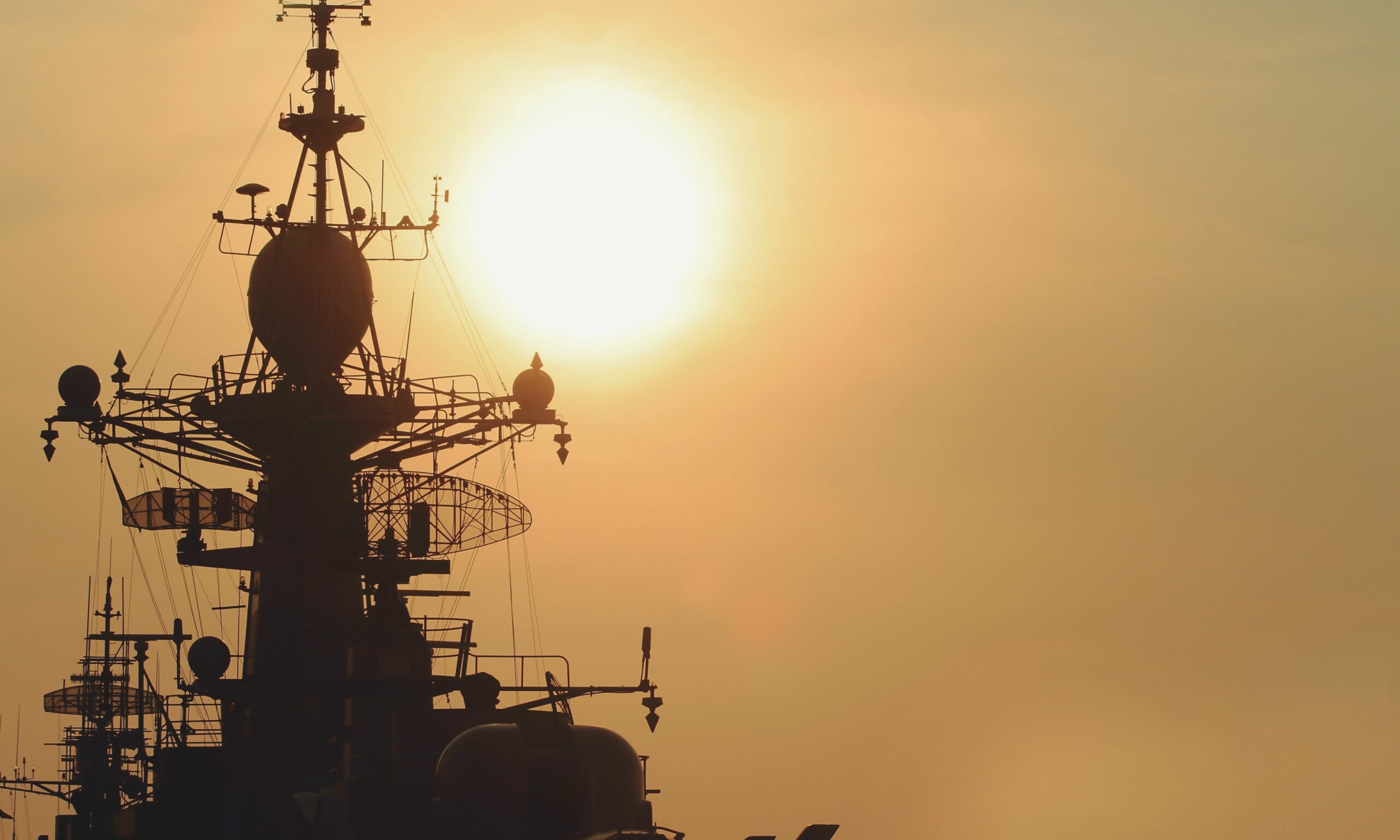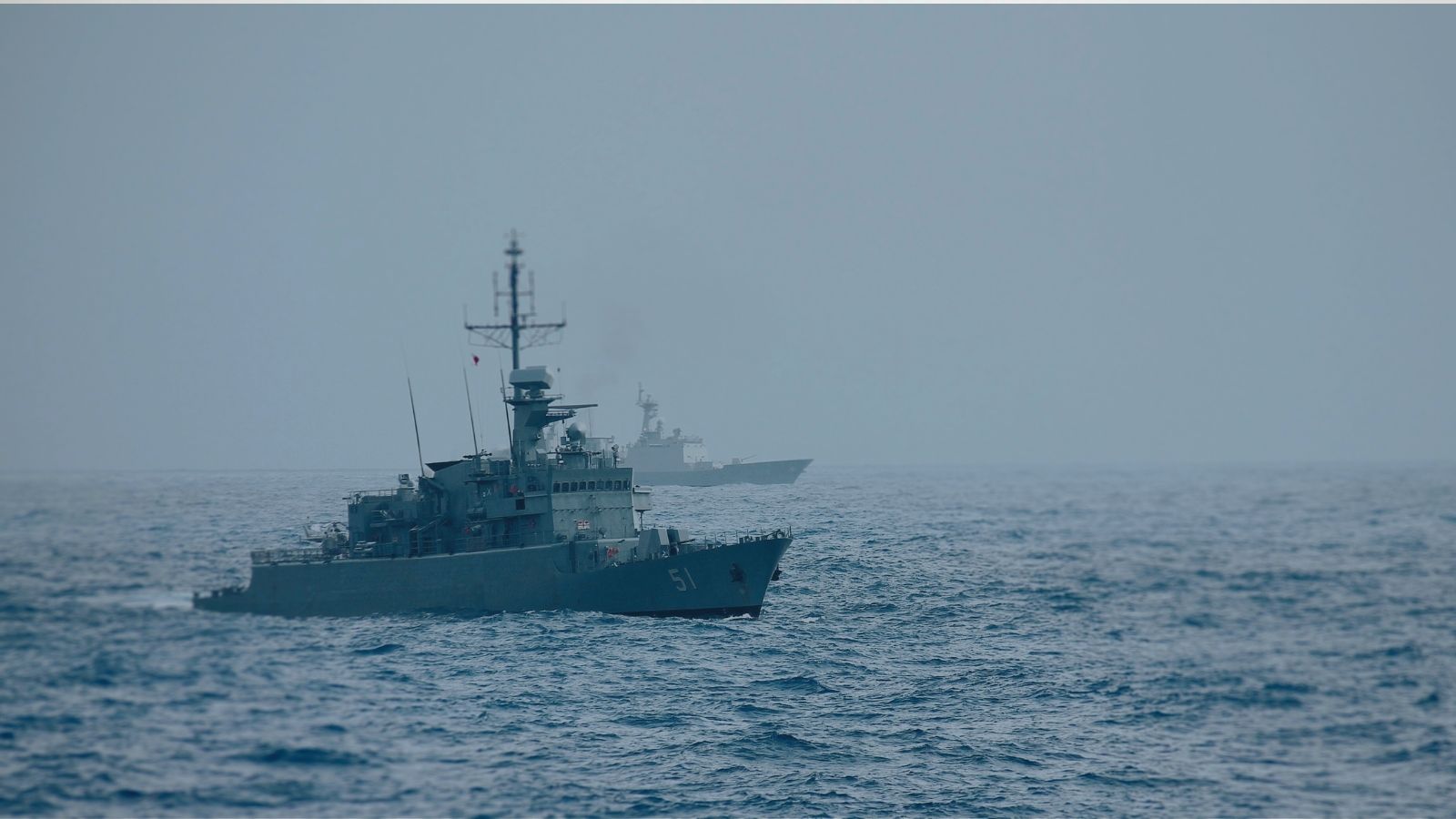Crisis Avoidance: Preventing Dangerous Maritime Incidents and Unintended Escalation in the Asia-Pacific
In this report, Tanvi Kulkarni, Frank O’Donnell, Shatabhisha Shetty, and Angela Woodward draw conclusions from the findings of a year-long APLN-VERTIC joint project on Maritime Incidents and Escalation in the Asia-Pacific. The findings are based on regional dialogues and consultations with senior experts from across the region, as well as three scoping papers produced by maritime security experts from the Asia-Pacific.
EXECUTIVE SUMMARY
The maritime regions of the Asia-Pacific – South Asia, Southeast Asia, Northeast Asia and the South Pacific – face complex dynamics and growing military competition between naval powers. Countries are modernising and expanding their naval capabilities, conducting more frequent multinational exercises, and making significant strides in naval power projection from the Western Pacific and South China Sea to the Indian Ocean. The past decade has witnessed a growth in encounters at sea and in the airspace above East and Southeast Asia’s contested waters. As multiple maritime forces come into closer contact with one another, there is a growing risk of incidents and conflict escalation.
The United States has also increased its military activities and freedom of navigation operations (FONOPs) in the region since 2018, resulting in increased cases of military-to-military encounters with Chinese forces at sea and in the airspace over the South China Sea. Between 2010-2022, most military-to-military encounters in Asia’s maritime and air domains took place between the United States and the People’s Republic of China (PRC). With tensions rising between the United States and China, any incident – whether intentional or through miscalculation, misunderstanding or mistake – risks escalating into serious conflict.
Six key factors were identified as contributing to the growing instability in the Asia-Pacific’s maritime environment:
- growing grey zone incidents involving non-military vessels in violent encounters at sea;
- different interpretations of the law of the sea and the selective interpretation of the 1982 United Nations Convention on the Law of the Sea (UNCLOS) by China relating to determination of jurisdictional zones and effects on navigation;
- sovereign impunity of actors resulting from unenforceability of treaties and formal agreements;
- great power rivalries overshadowing and compounding maritime challenges for smaller powers;
- growing military and technological assets and capabilities of regional powers crowding the maritime and overhead air spaces in the Asia-Pacific;
- limited maritime domain awareness inhibiting regional actors from developing a shared understanding of maritime security threats.
Risk reduction mechanisms and maritime confidence and security building measures (CSBMs) to manage dangerous military activities and incidents at sea are rather limited. The challenge is further compounded by lack of transparency, paucity of data on the scale of the challenge, poor enforcement mechanisms for current CSBMs, and an absence of agreements/protocols for managing hazardous maritime incidents. These conditions, as they interact, have led to a normalisation of aggressive behaviour at sea.
Click here to download the full report
POLICY RECOMMENDATIONS
To identify pathways forward to address these challenges, the APLN-VERTIC project conducted wide consultations with experts from countries across the Asia-Pacific, and published three scoping papers on the extant Asia-Pacific maritime CSBM context and areas for improvement. From these initial analyses, APLN-VERTIC identified existing gaps in the CSBMs architecture, which could be addressed by combinations of:
- the expansion of the geographical scope of existing arrangements;
- broadening the vehicle classes and civil/military statuses of vessels covered;
- the addition of new participating states;
- the expansion of agreements to include non-military maritime agencies such as coast guards;
- standardising and regularising information and data exchange processes;
- reducing the selective interpretation of UNCLOS.
An overarching theme is the problem of impunity of action. In the absence of enforcement mechanisms for the violation of treaties or agreements, violators suffer only reputational costs, which they may be ready to bear to pursue their national interests and political objectives. A dedicated conversation is required on ways to ensure enforcement, verification, and compliance of maritime CSBMs and formal treaties.
Despite these challenges, there was strong support among experts and policy practitioners at two in-person Track 2 workshops for strengthening existing CSBMs and concluding new bilateral and multilateral initiatives.
Experts emphasised information sharing, data integration and greater maritime domain awareness as the most urgent and desirable area for confidence and security building among states. The proposal on regional information-sharing centres to require mandatory incident reporting, to improve maritime transparency, avoid selective reporting, and create an incident database to support follow-on dialogue on establishing a single definition of ‘dangerous maritime incident’ was ranked as the overall top proposal by the group. Such a mechanism could allow various national and regional agencies to develop shared understandings of maritime security threats and strengthen the norm of supporting greater shared transparency of Indian Ocean and Asia-Pacific operating environments as a core characteristic of a responsible maritime actor.
This would, however, require CSBMs to encourage states to broaden and increase their reporting of incidents (and avoid selective reporting) including those involving military vessels, maritime law enforcement agencies, research and surveillance vessels, and non-military commercial vessels like merchant, fishing, and other commercial vessels. This data could then be consolidated with regional information-sharing centres, allowing for greater cross-verification and validation of claimed incidents, to enable consistent patterns of transgressing states and non-state actors to be identified in a way that is not driven by great power competition dynamics. Participants also emphasised that while Chinese participation would be key in such mechanisms, its non-participation (while other states lodged incidents involving China) would normatively generate more costs for China. It would also build transparency for all states in terms of the trends and scale of maritime security problems in the region and propel a dialogue on defining a ‘dangerous maritime incident.’ However, participants also acknowledged the legitimate practical concerns regarding security and data protection, maintaining confidentiality and preventing sovereignty damage, especially as multiple nations with varying interests and technologies get involved in coordinating information.
CSBMs related to crisis communications were also prioritised by experts. Hotlines were noted to be reasonably effective mechanisms to review behaviour, curb violations and prevent escalation in case of crises. The proposal for a regional dialogue on best practices for use of crisis hotlines, as partly informed by India-Pakistan experiences, and a second proposal on existing maritime hotlines in the region to be upgraded and regularised as channels for coordinating efforts during both crisis and non-crisis conditions were both jointly ranked second. Given the poor record of the actual use of hotlines in Southeast Asia, and between the United States and China, a regional dialogue is recommended to clarify the function of naval and maritime hotlines and to agree to the modalities of using them.
The proposal for a regional dialogue on inculcating a culture of safety in maritime encounters and maintenance of good order at sea throughout national sovereign fleet and flagged vessels, with consequences for breaches was ranked overall third (jointly with Track 2 dialogue on good conduct at sea) indicating that regional experts attribute high priority to safety and accountability of sovereign and flagged vessels. Flag states must ensure that vessels under their jurisdiction comply with the 1972 Convention on the International Regulations for Preventing Collisions at Sea (COLREGs), and violation of these guidelines should be penalised in the form of sanctions or de-flagging of the vessel.
About the Authors
Dr Tanvi KULKARNI is a Policy Fellow at the Asia-Pacific Leadership Network for Nuclear Non-Proliferation and Disarmament.
Dr Frank O’DONNELL is a Senior Research Adviser at the Asia-Pacific Leadership Network for Nuclear Non-Proliferation and Disarmament and a Non-resident Fellow in the Stimson Center’s South Asia Program, Washington DC.
Shatabhisha SHETTY is the Executive Director of the Asia-Pacific Leadership Network for Nuclear Non-Proliferation and Disarmament.The report summarizes the findings of our project and discusses confidence and security building options for the future.
Angela WOODWARD is Deputy Executive Director of the Verification Research, Training and Information Centre (VERTIC).
DISCLAIMER: The views expressed in this report and in other project outputs are those of the authors and do not necessarily reflect the official policy or position of the funder nor of the project partners, their staff or boards.




